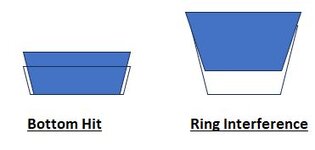desertgarage
Student
- Apr 7, 2025
- 4
I'm trying to deal with the rebounding action(bounce) of two flat faced steel cylinders striking each other. I'm convincing myself that re-configuring from two flat faces to a 25-30 degree off center line conically tapered end on one cylinder and a corresponding angle female feature on the other will redirect the impact forces and greatly reduce the bounce. Not enough angle to taper lock, but a redirecting of energy as opposed to the 90 degree faces. Does this theory have any validity?
Last edited:

